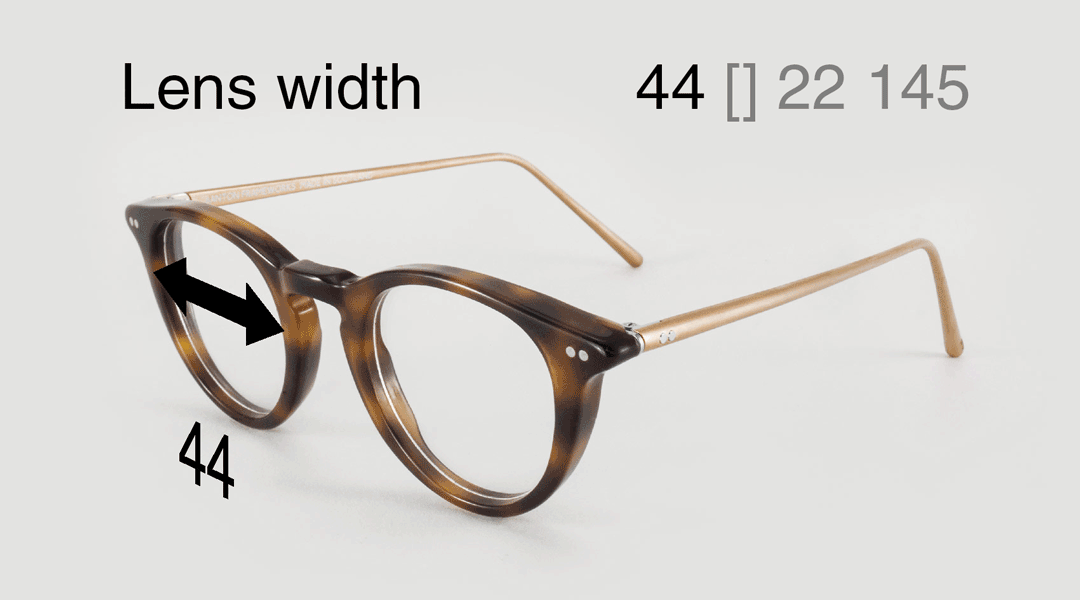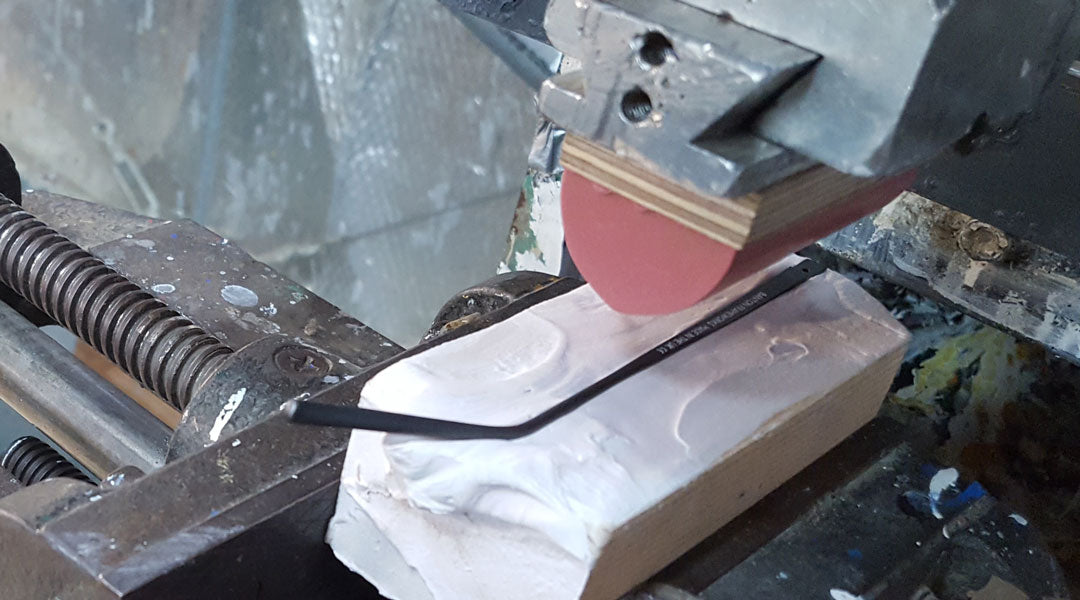Glasses frames are measured in three main aspects; lens width, bridge width and temple length. This series of numbers is always labelled in this order, measured in millimetres and may be separated by a small square, dash or space between the bridge and lens measurements.
Just like your clothes, your eyeglasses have their own unique sizing which can determine their overall comfort and suitability for your head-size. Seen in the illustration below, you can see how each value determines the size numbers of any particular glasses frame.

Where is my glasses size?
The dimensions of your glasses are predominantly labelled on the interior surfaces of your frame, usually on one of the temples. Occasionally, they can be located on the temple tips or frame front, but that is uncommon.
The size will always be written as three listed numbers. E.g. 44 [] 22 145
For sunglasses, the frame’s lens and bridge width are still usually printed, but can sometimes omit the temple length. This is because certain manufacturers produce their sunglasses using an average size of temple; a ‘one size fits all’ sort of approach.

What is the average glasses frame size?
Frames for adults vary slightly for men and women, but are generally made to standard sizes similar to shoes or clothes. Depending on the brand, there may be size options available in the lens width, bridge width and temple length.
- Average adult lens widths: 40 – 60mm
- Average adult bridge width: 14 – 24mm
- Average adult temple lengths: 120 – 150mm
*Oversized frame styles can exceed these dimensions, especially women’s butterfly sunglasses, oversized men’s frames or bespoke editions.
What are those other numbers on my glasses?
Alongside the dimensions of the frame, it’s common for eyewear manufacturers to include serial and/or model numbers, collection names as well as certifications.
Some examples include;
- CE mark
- Kite mark
- Brand trademark
- British Standard mark
- Registered brand mark
- UV40 or UV400 lens certification
- Serial/model number
- Batch Number
- Provenance

Is your PD written on your glasses?
Your pupillary distance (PD) is a facial measurement unique to you, therefore will never be printed on your glasses. Your PD or dual PD is the total or combined distance between your pupils and is not determined by the size of a spectacle or sunglasses frame. The same rule applies for your ocular heights (OC) which the vertical component of your lens centration.

Example of a spectacle temple being pad printed with the Banton Frameworks name and Scottish provenance. This process is widely used to mark spectacles and sunglasses as a way of imparting the dimensional numbers | © Banton Frameworks
How are the numbers on glasses printed?
There are numerous ways to label spectacles and sunglasses frames. The most common methods are laser etching, pad printing, hot foiling or using adhesive labels, discreetly applied to the interior surfaces of the frame.
Laser etching is highly accurate and uses a CNC laser beam to rapidly burn the surface of the spectacle or sunglasses frame. This process can be used on acetate or metal and can even be used to mark the lenses.
Pad printing is one of the most common methods of labelling spectacles or sunglasses frames. Using an automated rubber stamp, coloured ink is transferred from a plate called a cliché and applied to the frame. It is fast, accurate and highly repeatable, suited for low to high production volumes. The only drawback to this process is the curing time of the ink to fully set.
Hot foiling is similar to pad printing but instead uses sheet metal foil and a heated metal stamp. The stamp is embossed with the frame’s numbers and dimensions which is then pressed against the sheet foil onto the surface of the acetate frame.
Adhesive labels are occasionally used to mark the dimensions of spectacles or sunglasses frames. If present the label/s usually reside within a recess as way of making them level or ‘flush’ with the surface of the frame.
Summary
If you’re buying glasses online and are unsure what size of frame you need, a good method is to reference your existing frame’s dimensions.
Remember that the dimensions of any frame are always written in millimetres, in the order of lens width, bridge width and temple length.
It’s common to be out-with the regular sizing of glasses frames as you may require a wide bridge or a short temple length. If this is the case, you may require adjustments to your frame to ensure a comfortable fit. If you're looking for some advice on whether or not your glasses fit check out this blog.
Hopefully you found this article helpful. Please check out our other eyecare blogs. Thanks for stopping by.